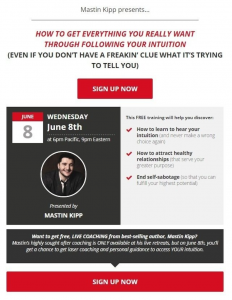This week we look at the first of six agile marketing roles: the Team.
Six agile marketing roles
The navigator identifies six agile marketing roles, whereas Scrum has only three named roles. We’re not trying to overcomplicate roles, but we’ve expanded our definition of agile roles to go beyond just the team. The roles that support the team must also be versed in agile marketing and know their responsibilities. In my experience with Scrum, we often forget about everyone outside the team — and those people think that agile is only for the team.
Over the next several weeks, we’ll deep dive into each of these roles and why they are significant. Of course a framework only scrapes the surface of these roles and isn’t intended to be a comprehensive job description. That’s where your organization and its uniqueness fit into the mix; but what our framework does provide is a baseline of what’s expected from these roles in agile marketing.
Role #1: The Team
Today we’re going to dive into our first role, the team itself. If you’ve worked on an agile team in the past, the role of a team member doesn’t change much despite the framework used. However, we’ll refresh you on what makes up a good agile team versus one that may not be set up for success.
Who should (and shouldn’t) be on an agile marketing team?
When getting started with agile marketing, a good team formation is going to be key to your success. I’ve seen a lot of variations of what people call an agile “team” so let’s begin with who should and shouldn’t be on your team.
Should:
- People who are getting their hands dirty and are “doers” of the work — such as content writers, SEO specialists, graphic designers, software developers, analytics, etc.
Shouldn’t:
- People who are managing the work of others, but not actually doing it themselves. We have another role for them called “Practice Leads” which will get into in the coming weeks.
It’s really common for everyone to want to be on the agile team, however, in order to gain the autonomy and ownership that are core tenets of agile marketing, the team needs to be made up of people who are actually getting the work done and who can collaborate with each other without someone telling them how to do it.
Cross-functional teams vs. functional teams
In agile marketing, a cross-functional team is the ideal setup. This means that you have a mix of roles that can get a piece of work delivered from end-to-end without having to go to another team.
If you’re building web landing pages, you’ll probably need a designer, a writer and a developer to complete the work. The magic lies in having those roles working together, day-in and day-out, and understanding the entire piece of work from start to finish. That means being able to quickly deliver customer value.
A functional team, such as a team of designers, may gain some benefits from agility, but there are limitations. While some companies don’t have full buy-in and need to start this way, they will find themselves unable to deliver value independently. A graphic design team may become really efficient and collaborative, but without the other roles, their work sits like inventory on a shelf.
Self-organizing marketers
Becoming self-organizing marketers is the goal with agile marketing. This means that the team serves more as consultants to stakeholders, having an active say in ideation about the marketing that needs to happen.
To become self-organizing, leaders must trust the team and allow them to fail. This can be really difficult in a traditionally-run culture, but once the team is freed and feels psychologically safe to give their opinions, more creative marketing happens.
T-shaped marketers
On an agile team, we look to create T-shaped marketers, meaning you have your core specialty but can help in a few other areas. While your job may be a graphic designer, if you can edit copy to move the work along, then you’re helping the team, not just staying in your lane. An agile marketer knows and understands everything that has to happen to get work done, not just a single piece of the puzzle.
Working on an agile team is rewarding and empowering. You get to have a much larger part in the overall customer experience. Next week we’ll dig into the role of Marketing Owner (which is actually a part of the team).
The post Teams: Getting started with the Agile Marketing Navigator appeared first on MarTech.
MarTech(40)
Report Post






